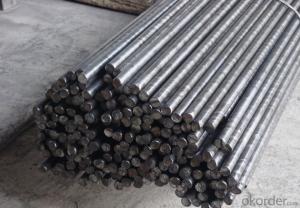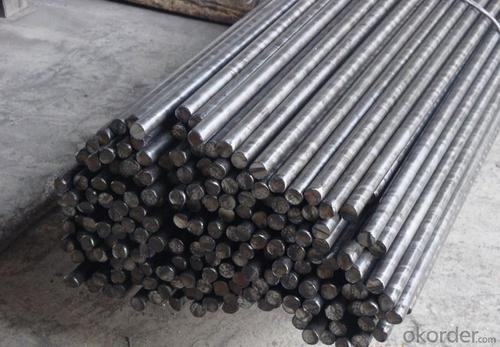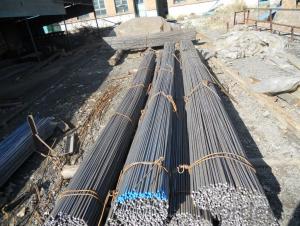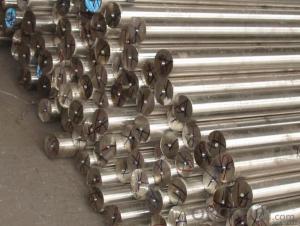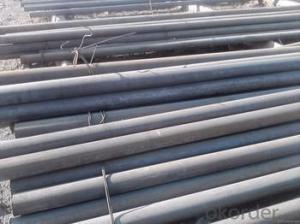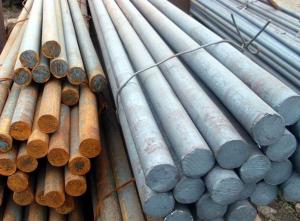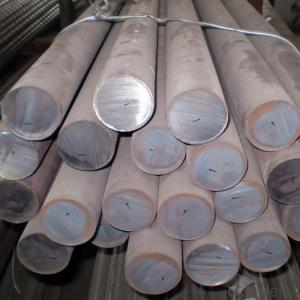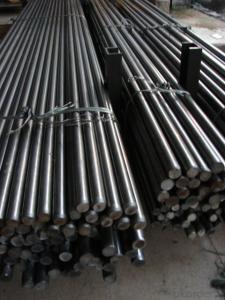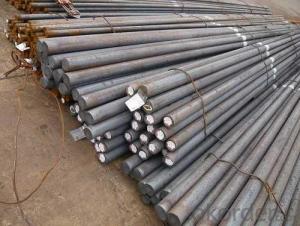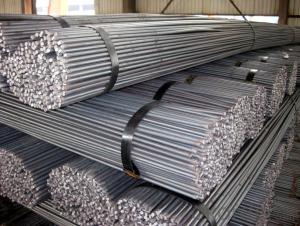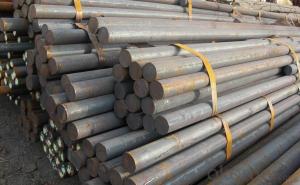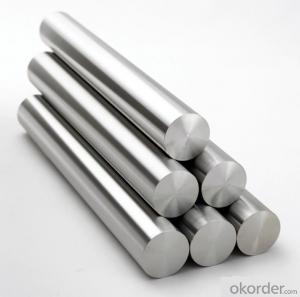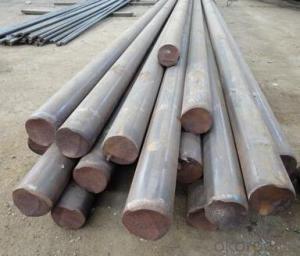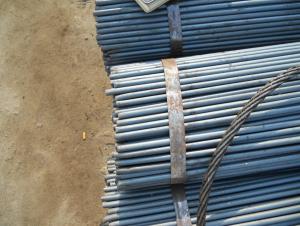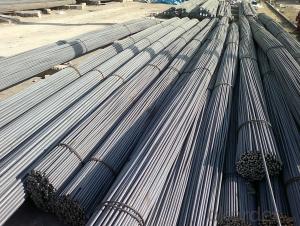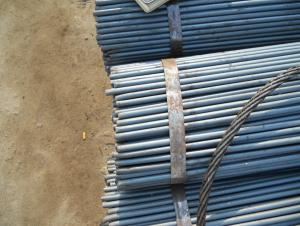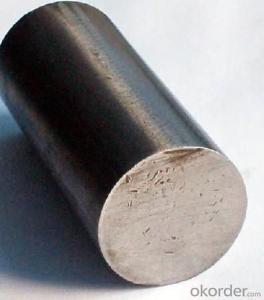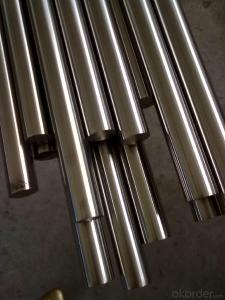GB 45#/SAE 1045 Steel Round Bar 38mm/40mm
- Loading Port:
- China main port
- Payment Terms:
- TT or LC
- Min Order Qty:
- 50 m.t
- Supply Capability:
- 10000 m.t/month
OKorder Service Pledge
OKorder Financial Service
You Might Also Like
GB 45#/SAE 1045 Steel Round Bar 38mm/40mm
Description:
-Specification:
| Diameter(mm) | Mass(Kg/m) | Length(m) |
| 38 | 11.24 | 6m, 12m |
| 40 | 12.56 | 6m, 12m |
| 42 | 13.85 | 6m, 12m |
-Standard: GB/SAE/Japanese Standard
-Material: GB 45#/SAE1045/S45C
Chemical Composition of GB 45#/SAE 1045 Steel Round Bar 38mm/40mm:
| C | Si | Mn | P | S | Ni | Cr | Cu |
| 0.42-0.50 | 0.17-0.37 | 0.50-0.80 | ≤0.035 | ≤0.035 | ≤0.30 | ≤0.25 | ≤0.25 |
Packaging & Delivery of GB 45#/SAE 1045 Steel Round Bar 38mm/40mm:
Packaging Detail: All goods are packed in bundle with steel strips and shipped by break bulk vessel or container (depend on target market and different ports)
Delivery Detail: 45 days
MOQ: 50 tons per specification; we can negotiate the quantity if the specification is normal or we have stock of one specification.
Weight: The price invoicing on theoretical weight basis or actual weight basis depends on customer’s request.
Shipment: The shipment of bulk break or container is depends on customer’s request and the situation of the port of destination.
Documents given: Full set of original clean on board bill of lading; Original signed commercial invoice; Original packing list; Policy of insurance; Certificate of origin and what the target market needs.
Payment:
-Invoicing on theoretical weight or actual weight a s customer’s request.
-FOB, CFR or CIF.
-Regular terms of payment:
1, 30% payment in advance, the remaining balance (70% payment) against the copy of B/L.
2, 30% payment in advance, the remaining balance (70% L/C) against the copy of B/L.
3, Negotiable.
Images of GB 45#/SAE 1045 Steel Round Bar 38mm/40mm:
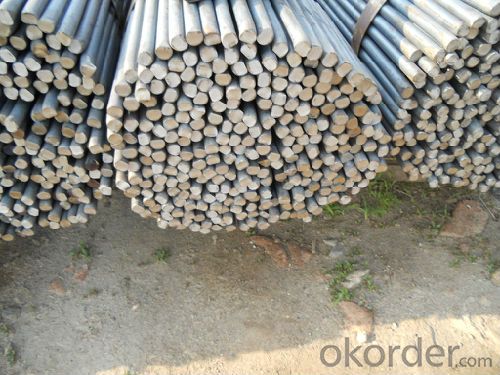
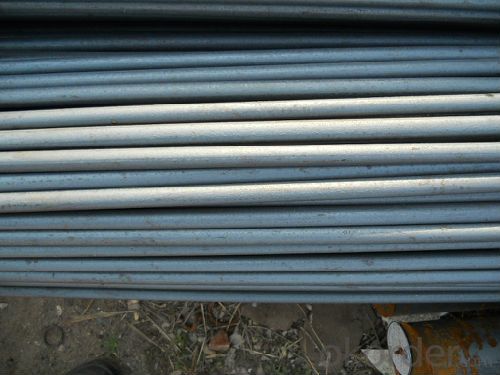
*If you would like to get our price, please inform us the size, standard/material and quantity. Thank you very much for your attention.
- Q: How do steel round bars compare to ceramic round bars?
- Steel round bars and ceramic round bars have distinct differences in terms of their properties and applications. Steel round bars are known for their exceptional strength and durability. They are made from alloys of iron and carbon, with additional elements such as manganese, chromium, and nickel. Steel bars are highly resistant to deformation, can withstand high temperatures, and have high tensile strength. Due to these properties, steel round bars are commonly used in construction, manufacturing, and engineering applications where strength and reliability are crucial. They are also easily machinable and can be shaped into various forms, making them versatile for different uses. On the other hand, ceramic round bars are made from non-metallic materials, such as clay, porcelain, or glass. Ceramics offer unique properties such as high resistance to heat, corrosion, and wear. They are also chemically inert and have excellent electrical insulation properties. Ceramic round bars are commonly used in applications where high temperatures, chemical resistance, or electrical insulation are required, such as in the aerospace industry or for manufacturing electronic components. When comparing steel round bars to ceramic round bars, it is important to consider the specific requirements of the application. Steel round bars are preferred for their exceptional strength and toughness, making them suitable for heavy-duty applications where mechanical stress and load-bearing capabilities are crucial. Ceramic round bars, on the other hand, are often chosen for their resistance to heat, chemicals, and electrical insulation properties, which are important in specialized industries. In summary, steel round bars and ceramic round bars have different properties and are suitable for different applications. Steel round bars are known for their strength and durability, making them suitable for heavy-duty applications, while ceramic round bars excel in high-temperature, chemical-resistant, and electrically insulating applications.
- Q: What is the modulus of elasticity of a steel round bar?
- Young's modulus, also known as the modulus of elasticity, is a crucial measure when assessing the stiffness and ability of a steel round bar to resist deformation under an external force. Generally, the modulus of elasticity for steel is around 200 GPa. Consequently, when a unit of stress is applied to the steel round bar, it will undergo an elastic deformation ranging from approximately 0.0035 to 0.005, depending on the specific grade and composition of the steel. Hence, the modulus of elasticity plays a significant role in structural and mechanical engineering applications, as it dictates the level of deflection or deformation to be expected under various loading conditions.
- Q: How do steel round bars perform under cyclic loading?
- Steel round bars generally perform well under cyclic loading due to their high strength and ductility. The ability of steel to withstand repeated loading and unloading without significant deformation or failure makes it suitable for applications where cyclic loading is present, such as in structural engineering, automotive components, and machinery. However, the performance of steel round bars under cyclic loading also depends on factors like the quality of the steel, design considerations, and the magnitude and frequency of the cyclic loading.
- Q: Can steel round bars be used for making medical equipment?
- Yes, steel round bars can be used for making medical equipment. Steel is a versatile and durable material that is commonly used in the manufacturing of medical instruments and equipment. It possesses excellent strength and can withstand high levels of stress and pressure, making it suitable for a wide range of medical applications. Additionally, steel is resistant to corrosion and can be easily sterilized, ensuring that the medical equipment remains hygienic and safe for use. Steel round bars can be machined, shaped, and formed into various medical instruments such as surgical tools, implants, braces, and prosthetics. Therefore, steel round bars are a viable option for producing medical equipment due to their strength, durability, and compatibility with sterilization processes.
- Q: What are the advantages of using zinc-alloy steel round bars?
- Zinc-alloy steel round bars offer numerous benefits: 1. Enhanced corrosion resistance: The application of a zinc layer to these bars forms a protective barrier against corrosion, ensuring longevity and durability. As a result, they are highly resistant to rust and other types of corrosion. 2. Increased strength and durability: Zinc-alloy steel is renowned for its exceptional strength and durability. The zinc coating strengthens the steel's structure, enabling it to withstand heavy loads and high-stress conditions. Consequently, zinc-alloy steel round bars are ideal for applications that require reliability and strength. 3. Cost-effective solution: Compared to other materials that resist corrosion, zinc-alloy steel round bars are a cost-effective option. The zinc coating provides a more affordable alternative to pricey metals like stainless steel, offering comparable corrosion resistance and strength. 4. Versatility and ease of fabrication: Zinc-alloy steel round bars are incredibly versatile as they can be easily shaped and resized to suit various applications. They can be cut, bent, welded, and machined to meet specific requirements, making them suitable for use in the construction, automotive, industrial, and other sectors. 5. Aesthetically pleasing: The shiny and smooth zinc coating of zinc-alloy steel round bars enhances their visual appeal. Consequently, they are well-suited for applications where aesthetics play a crucial role, such as architectural designs or decorative elements. 6. Environmental sustainability: Zinc is a highly recyclable material, and the utilization of zinc-alloy steel round bars promotes environmental sustainability. By recycling these bars at the end of their lifespan, the demand for new raw materials is reduced, thereby minimizing waste generation. In conclusion, zinc-alloy steel round bars offer a range of advantages, including corrosion resistance, strength, cost-effectiveness, versatility, aesthetic appeal, and environmental sustainability. These qualities make them highly desirable for diverse industries and applications.
- Q: Are steel round bars suitable for decorative purposes?
- Yes, steel round bars can be suitable for decorative purposes. Steel is a versatile and durable material that can be shaped and manipulated into various designs and patterns. Steel round bars can be used to create decorative elements such as railings, furniture, sculptures, and architectural details. The smooth and shiny surface of steel can add a modern and sleek aesthetic to any space. Additionally, steel is known for its strength and longevity, making it a practical choice for decorative purposes as it can withstand environmental factors and maintain its appearance over time.
- Q: What is the difference between 40Cr round steel and 40Cr steel forgings?
- But 40Cr forgings are objects that are subjected to pressure by plastic deformation to shape a desired shape or suitable compressive force. (usually done by using hammers or pressure).
- Q: Can steel round bars be used for making propeller shafts?
- It is indeed possible to utilize steel round bars in the production of propeller shafts. The utilization of steel in propeller shafts is widespread due to its robustness, endurance, and ability to withstand corrosion. In particular, round bars are frequently favored due to their shape, which offers exceptional strength and load-bearing capabilities. The decision regarding the steel grade and specific properties will be contingent upon the propeller shaft's requirements, such as the desired dimensions in terms of length, diameter, and torque capacity. Moreover, factors like cost, weight, and manufacturability may also play a role in influencing the selection of steel round bars for propeller shafts.
- Q: Can steel round bars be coated with protective finishes?
- Steel round bars can indeed have protective finishes applied to them. Applying protective finishes to steel round bars is a widespread practice aimed at improving their durability and resistance to corrosion. There are several options available for protective finishes, such as galvanizing, powder coating, and epoxy coating, among others. These finishes effectively safeguard the steel bars against rust and deterioration, thus prolonging their lifespan and enabling them to perform well in different environments. The selection of a protective finish depends on various factors, including the intended use of the steel round bars, the extent of exposure to moisture or corrosive substances, and the desired aesthetic appeal.
- Q: Can steel round bars be bent?
- Yes, steel round bars can be bent. The flexibility of steel allows it to be shaped and manipulated into various forms, including bending round bars into desired angles or curves.
Send your message to us
GB 45#/SAE 1045 Steel Round Bar 38mm/40mm
- Loading Port:
- China main port
- Payment Terms:
- TT or LC
- Min Order Qty:
- 50 m.t
- Supply Capability:
- 10000 m.t/month
OKorder Service Pledge
OKorder Financial Service
Similar products
Hot products
Hot Searches
Related keywords
